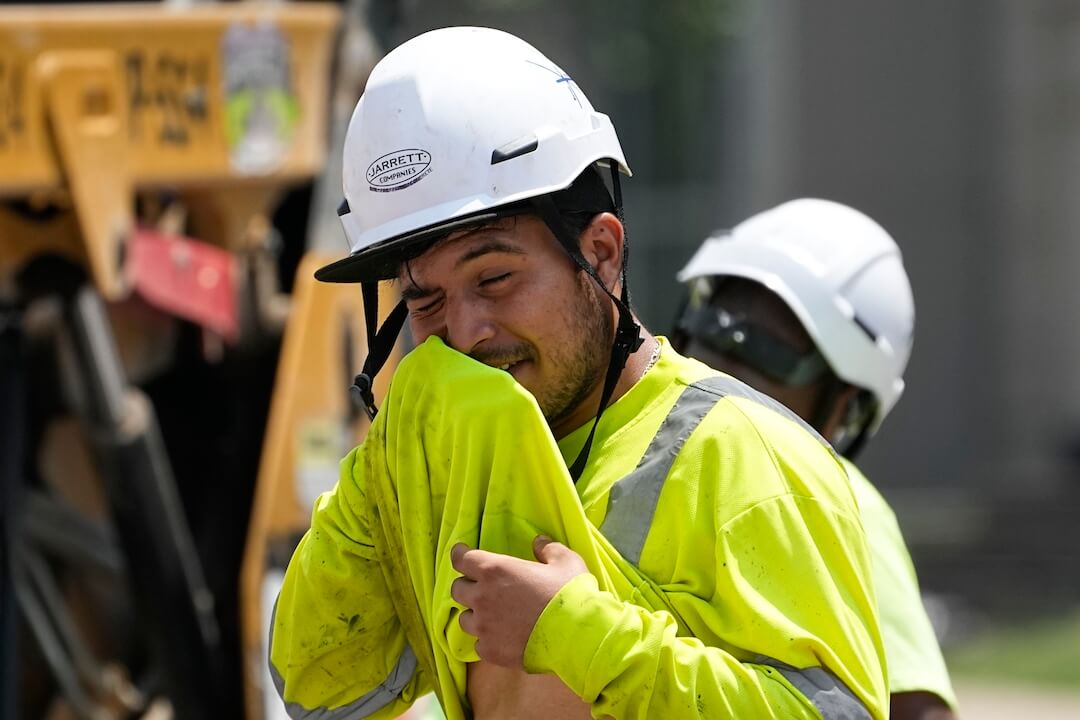Climate change is one of the most pressing issues facing humanity, yet it continues to be a challenge for journalists to cover. The subject defies many of the trappings of compelling narratives: heroes and villains; immediate actions and consequences; easy to understand storyline; and hope. But still, many news organizations are breaking through, which is why Aspen Ideas: Climate gathered journalists and experts to share new information and narrative ideas to bring the climate crisis to the public.
Climate bloggers, local television reporters, national news editors, and other seasoned journalists brought their best ideas and insightful advice to the table. Experts presented the lastest science. A highlight was Tony Leiserowitz, lecturer, senior research scientist, and director of the Yale Program on Climate Change Communication, who shared five elements every story about climate change must hit to be successful. He suggested journalists use this checklist every time they put together a story:
- Scientists agree
- It’s real
- It’s us
- It’s bad…
- …but there’s hope
Over the course of the gathering, a few universal lessons emerged that journalists of all levels can use in their work today.
RELATED TRAINING: Apply by Aug. 14, 2023, for Covering Climate Change Science and Policy in a Polarized World.
Make climate a top priority
In this fast-paced news environment, editors have to make tough calls in determining which stories will be allotted prime real estate and the organization’s limited resources. Often, breaking stories take precedence over long term societal issues. Climate stories can tend to have a long-term impact and be hard to explain. But that’s changing.
At The Washington Post and The Guardian, editorial teams are investing significantly in climate coverage — and it’s making a difference. Katharine Viner, editor in chief of The Guardian, and Sally Buzzbee, executive editor of The Washington Post, have made climate coverage a top priority for their publications, which speaks to the shifting appetite for such coverage. The topic has been a “political football” for so long, Buzzbee said. “We’re trying to actually capture what we see as a change in the audience and push that forward to what journalism is needed now.”
With that in mind, The Washington Post developed a Climate Solutions section and hired a “climate coach” to help guide people along the way. Ultimately, the goal is to make climate stories more accessible. “We can’t control the moments when people are interested in topics,” said Buzzbee. “What we try to do is, at the moments when those high points of interest happen, be there with good explanatory information.”
At The Guardian — where the primarily European audience has been more receptive to climate news for longer — the coverage is also a revenue driver. According to Viner, people read climate coverage and are compelled to contribute immediately afterward. Readers sense that “we mean what we say,” said Viner, pointing to the company’s commitment to cover the crisis around the globe — including a reporter in the Amazon — and its commitment to no longer taking ad dollars from fossil fuel companies.
Every beat is the climate beat
Climate change impacts — and is impacted by — every facet of daily life from the cars we drive to the clothes we wear to the food we eat. For journalists, this means every beat has a climate angle and should have a mandate to connect those dots for the public.
“The fashion industry … accounts for almost 10% of global greenhouse gas emissions. It pollutes the rivers, it dries up our water sources, and 85% of all textiles end up in the garbage every year,” according to Vanessa Hauc, anchor of Noticias Telemundo’s “Planeta Tierra,” and the moderator of the “Green is the New Black” panel. But there is hope, and there are also plenty of stories to tell. From the panel alone, there were stories of established brands greening their processes, startups turning nontraditional materials into green alternatives, and the innovative methods used to drive investment in greener supply chains.
It’s not just the style section that could spend more time covering climate angles. For instance, the “Making Skyscrapers Sustainable” panelists, including architect Michael Green, delved into competing ideas about how to green the building process. From wooden skyscrapers to greener steel, there are more options than one might think — especially for those who haven’t seen it in the news.
However, some recent buzzworthy topics such as 3D printing, might not be the solution. “I’m worried that when we say ‘I built a sustainable building,’ we’re convincing the public that that’s good enough,” Green said. “We are trying to be more sustainable but we are nowhere near sustainable … because there is so much wasted material and nonrenewable materials in all buildings today.”
Green warns that we need to be careful in how we promote what innovations are actually solving the world’s problems and ones that are just fun to talk about.
Find the local angle
Climate change often feels abstract to the public. Focusing on global impacts can make the challenge seem far away. To drive home the reality of climate change, journalists must tell the story of how it impacts people locally.
As the “Hell or High Water” panel illustrated, coastal communities from Louisiana to Bangladesh are impacted by the climate crisis, and managed retreat from rising sea levels are already happening. Similarly, cities from Beirut to Detroit are rethinking how they build resilient nature-based infrastructure to protect against severe weather events. From impact to prevention, there is almost certainly a local story to tell that helps make climate change more relatable and immediate at the local level.
Local can have national ramifications. Susan Crawford, Harvard Law School professor and author of “Charleston: Race, Water, and the Coming Storm,” tells the story of the impending climate catastrophe awaiting Charleston, South Carolina. Their challenges — homes built on landfills, inequality in Black neighborhoods — is specific and local but carries a warning for coastal cities across the nation.
Meteorologists are trusted messengers
Meteorologists have seen the bigger changes in weather patterns over time and their compounding effect. Take it from Emmy Award-winning meteorologist Bernadette Woods Placky, who is also the director of Climate Central’s Climate Matters and spoke during the opening plenary of the conference.
Heat waves are getting more intense and lasting longer, our water cycles are being supercharged, and sea levels continue to rise.
“Despite these changes, there is an enormous gap in our climate IQ, but there is a way to bring viewers along in the process to help them better understand what’s going on,” said Woods Placky. “It’s important to strike the right balance when it comes to climate communication.”
She suggested the following:
- Know your audience. Topic, tone and timing are important.
- Meet people where they are. Climate change is impacting all of us.
- Personalize and localize. It’s a global issue but people are concerned about what’s happening outside their own door.
- Simplify. It’s important to break it down.
- Don’t be afraid. While this has become a politically challenging topic, it doesn’t have to be the whole conversation.
Weather coverage is important to everyone, and meteorologists are trusted local messengers helping people understand how weather impacts everything from personal health and travel plans to larger issues like food systems and water availability.
Recognize that it’s a social justice story
“Throughout the United States, the most vulnerable people are suffering now, and they’re suffering the most,” said Catherine Coleman Flowers, founder of The Center for Rural Enterprise and Environmental Justice. Covering climate change as a social and environmental justice story brings together many of the best practices already outlined here (like finding a local angle and making every beat the climate beat) and makes it more relatable.
Across rural America, small towns and Native nations face climate challenges related to water access, landscape stewardship and a just transition to a greener future. Though the climate narrative focuses on larger population centers, these often-overlooked communities are areas of innovation and opportunity, full of natural assets and practical experience that will help us reach regional and national climate goals.
For example, the Northern Blues Restoration Partnership has been working to create solutions to the increased forest densities of the Northern Blue Mountain area in Oregon and Washington. As forest densities have increased, forest composition has become less draught and fire resistant, which increases the risk of fire and jeopardizes valued resources, making wildland fire fighting more hazardous.
Environmental justice needs to be at the heart of all climate reporting in order to find a path to equity.
Tell me the solution
People want climate coverage per Edelman’s Ed Williams and the Trust Barometer. Most (59%) people say, “there is not enough reporting in the media about solutions to climate change.” And another 45% of people say they find it “hard to find climate change information that they can easily understand.” People are eager for climate coverage; they just want it to be more solution-oriented and in plain language.
Armed with the right strategy, journalists have a huge role to play in how the public perceives the climate crisis. However, the coverage can’t be limited to the climate desks of marquee papers. The climate is the biggest story of our time. It affects people at every level and facet of life. We must reflect that in the stories we tell.








